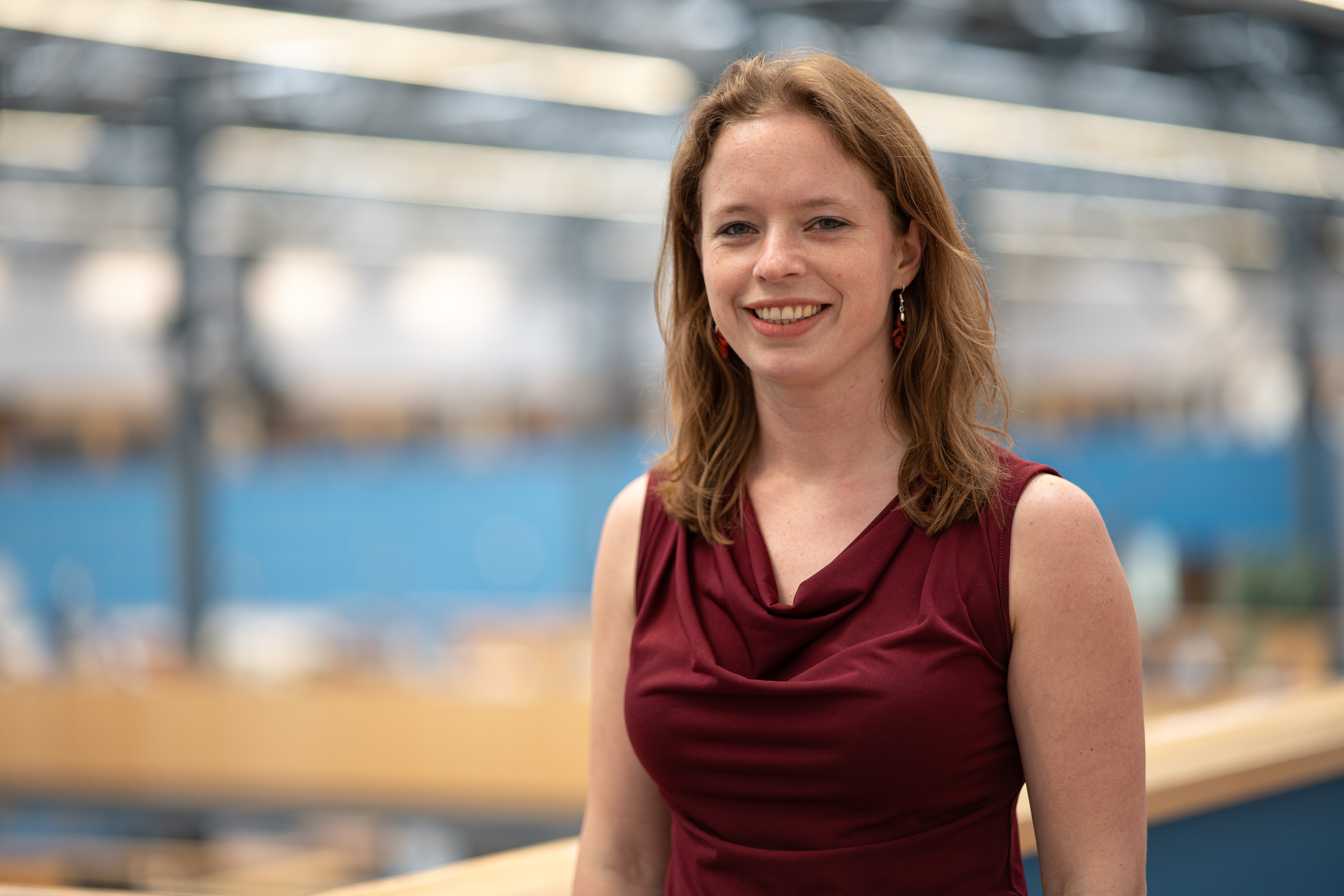Robin de Kruijff
As a tenure track assistant professor in the Applied Radiation & Isotopes group, rising star Robin de Kruijff develops new and smart ways for producing radionuclides that can be used for disease diagnosis and treatment. ‘Often, it is about cancer,’ she says, ‘but they are also used to study, and thereby help remedy, disorders in human metabolism. In our group, we are very much in tune with the needs of medical professionals and that is where we put our focus.’

Off-line
Except for a postdoc appointment at the Argonne National Laboratory in Chicago, where she worked on radionuclide production using linear accelerators, she has been a staunch user of the Higher Education Reactor located at the Reactor Institute Delft. In this reactor, radionuclides are created by bombarding a target with neutrons. At the moment, however, the reactor is off-line, nearing the end of a two-year upgrade. ‘I am very much a hands-on kind of researcher and less involved in theoretical modelling, so this has caused me quite some hindrance,’ she says.
Radiotracers
‘There are many exciting developments in the field of radiotracers,’ she says. Radiotracers are chemical compounds in which one atom is replaced by a radionuclide. As these compounds behave just like their non-radioactive counterparts, they can be used for all kinds of biological and medical imaging, and for treatments. But many of the radionuclides used in such tracers are either poorly available or not available at all. ‘That is my main drive,’ she says. ‘I want to come up with an efficient process for producing and separating new tracers thereby making more research possible.’
Milk and more
She also uses tracers herself for advanced research. But with the reactor down, she currently has to buy these tracers, which is both cumbersome and expensive. In a project in collaboration with Friesland Campina, she looks at the uptake of calcium and iron. The end goal of the project is to develop food supplements that can be added to milk thereby increasing this uptake. ‘We are using in-vitro models, simulating the human body in a beaker.’ Ultimately, she would like to create supplements that are enriched with stable, non-radioactive isotopes. ‘Analysing human excretions by using neutron activation, we can say a lot about the metabolism of humans without having to expose them to radiation at all.’
Micro-fluidics
De Kruijff also has an ongoing project with the department of Chemical Engineering in which they investigate the use of micro-fluidics for separating radionuclides from the target material. ‘It is a very novel use of micro-fluidics,’ she says. And she is writing several research grants on radionuclide production. ‘In the long run, I want to increase the variety of radionuclides available and understand how to put these to best use.’
The right place
She could have stayed abroad but also feels very much at home within her group at the Reactor Institute. ‘We have a great infrastructure and a proton therapy center at our doorstep.’ What she did take home from the United States is a knack for line dancing. If you are up for that too, and you are into contemporary music, give her a call.